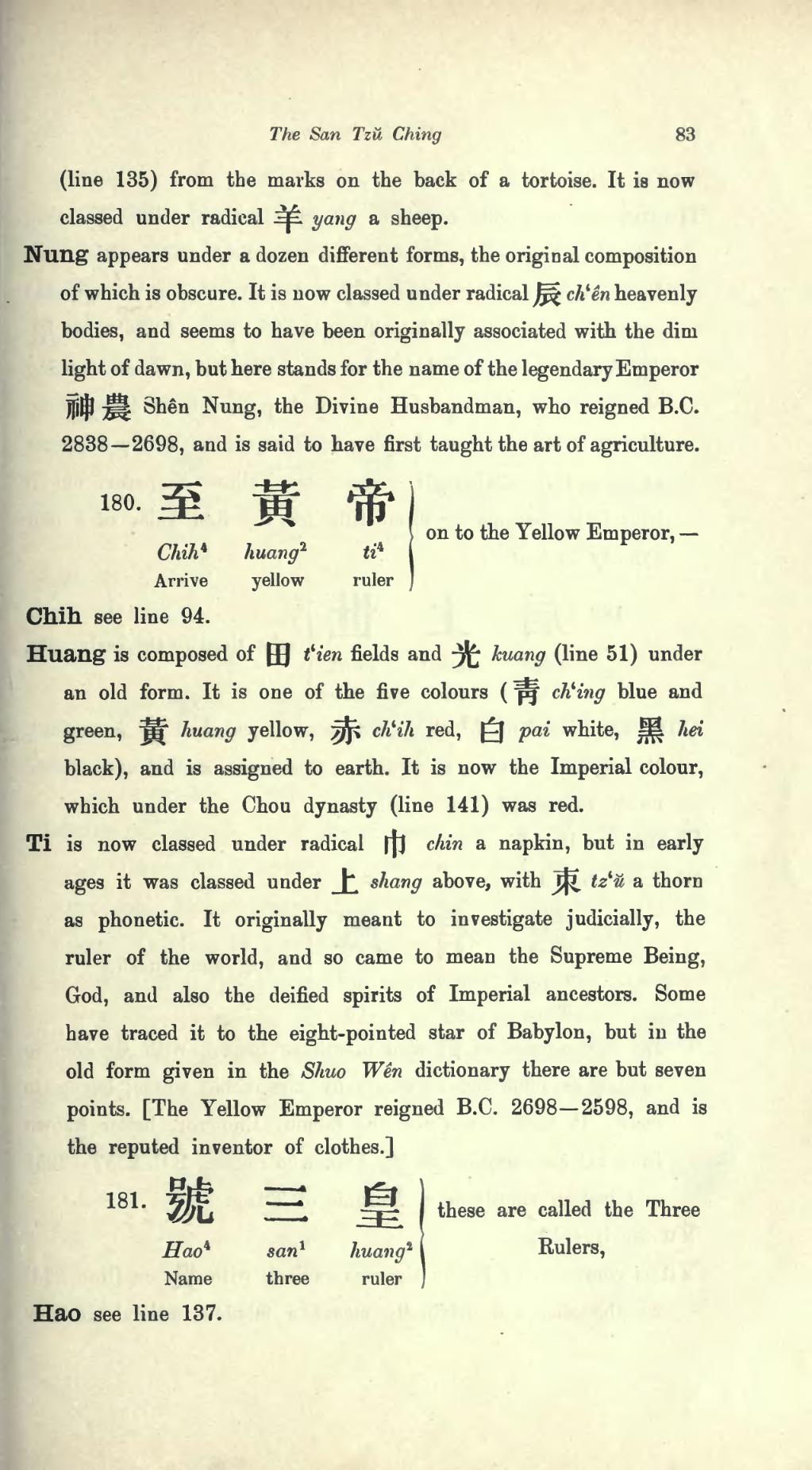(line 135) from the marks on the back of a tortoise. It is now classed under radical 羊 yang a sheep.
Nung appears under a dozen different forms, the original composition of which is obscure. It is now classed under radical 辰 ch'ên heavenly bodies, and seems to have been originally associated with the dim light of dawn, but here stands for the name of the legendary Emperor 神農 Shên Nung, the Divine Husbandman, who reigned B.C. 2838—2698, and is said to have first taught the art of agriculture.
| 180. | 至 | 黃 | 帝 | on to the Yellow Emperor,— | |
| Chih4 | huang2 | ti4 | |||
| Arrive | yellow | ruler |
Chih see line 94.
Huang is composed of 田 t'ien fields and 光 kuang (line 51) under an old form. It is one of the five colours (青 ch'ing blue and green, 黃 huang yellow, 赤 ch'ih red, 白 pai white, 黑 hei black), and is assigned to earth. It is now the Imperial colour, which under the Chou dynasty (line 141) was red.
Ti is now classed under radical 巾 chin a napkin, but in early ages it was classed under 上 shang above, with 束 tz'ŭ a thorn as phonetic. It originally meant to investigate judicially, the ruler of the world, and so came to mean the Supreme Being, God, and also the deified spirits of Imperial ancestors. Some have traced it to the eight-pointed star of Babylon, but in the old form given in the Shuo Wên dictionary there are but seven points. [The Yellow Emperor reigned B.C. 2698—2598, and is the reputed inventor of clothes.]
| 181. | 號 | 三 | 皇 | these are called the Three Rulers, | |
| Hao4 | san1 | huang2 | |||
| Name | three | ruler |
Hao see line 137.

